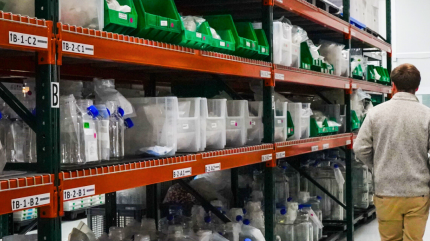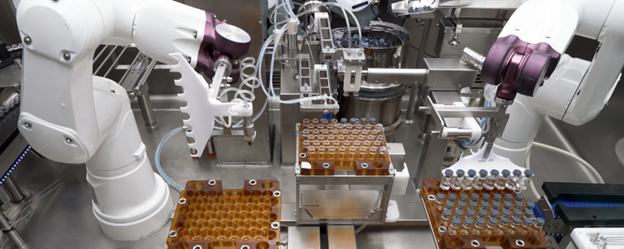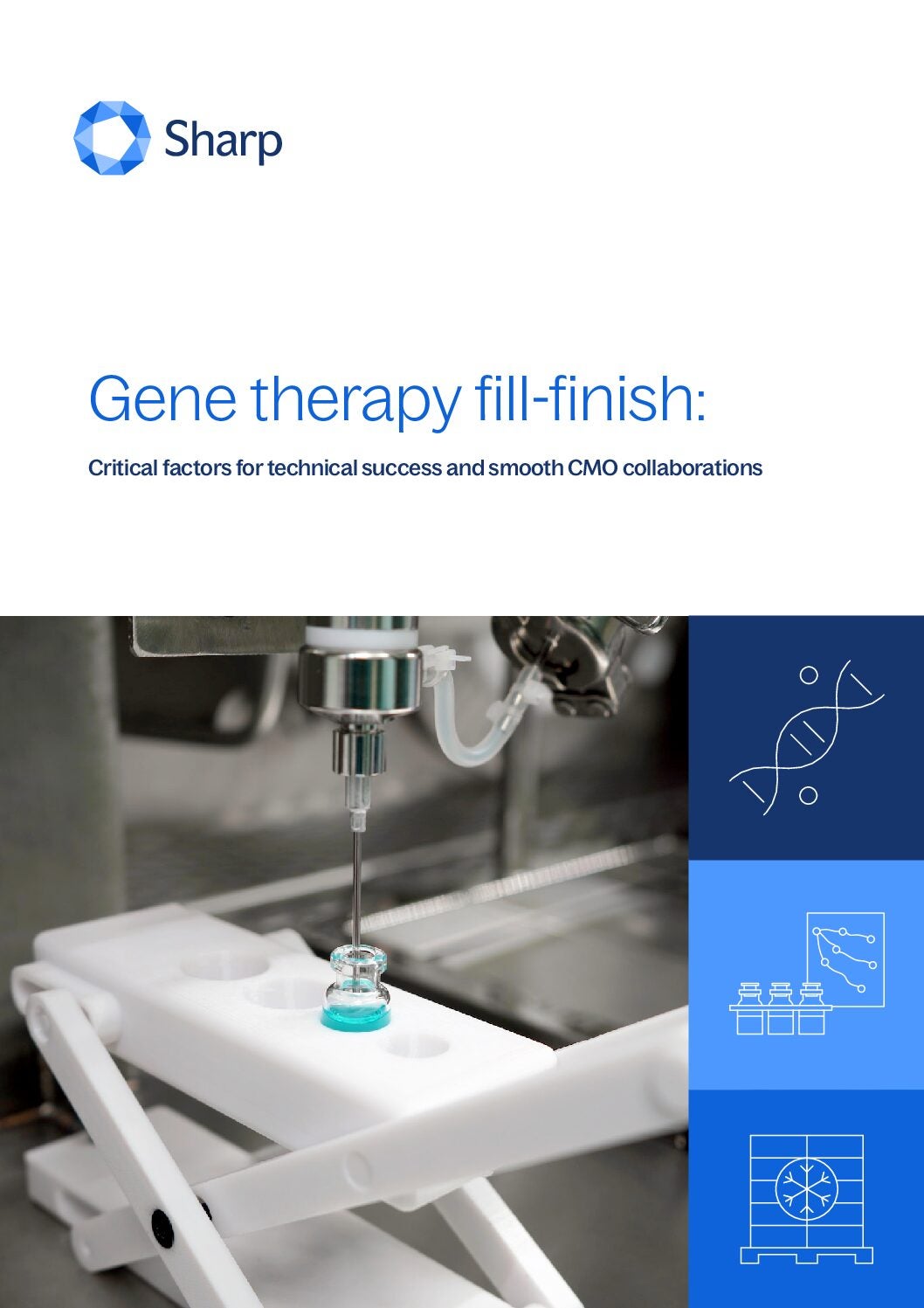
Between 2012 and 2021, outsourcing propensity for FDA NDA injectables approvals averaged 40%, according to GlobalData’s Contract Injectable Packaging Trends in the Bio/Pharma Industry report. To continue supplying patients effectively, it can sometimes be necessary to navigate the transfer of a commercial drug product to a new contract development and manufacturing organization (CDMO). However, this process demands strategy and seamless coordination to ensure the continuity of manufacturing, regulatory compliance, and product quality. This blog aims to elucidate the critical steps and considerations involved in transferring commercial drug products to a new CDMO.
Major challenges
Transferring a commercial drug product to a new CDMO poses more challenges in areas such as process knowledge transfer compared to scaling up a Phase III drug product for commercial readiness. This transfer demands:
- Knowledge transfer to the new site
- Retrofitting the existing process to fit the new facility
- Working with predetermined critical process parameters (CPPs)
Moving an established process with set CPPs to a new facility requires extensive employee training and efforts to maintain CPPs with minimal process alterations and no adverse impact to the drug product’s safety, quality, identity, potency, and purity (SQUIPP).
Performing a gap analysis
In a tech transfer, the initial step involves conducting a gap analysis to assess anticipated changes. An approach is then customized based on these potential alterations and their impact on the drug product’s SQUIPP. For a commercial drug product tech transfer to a new fill-finish CDMO, the gap analysis includes analyzing:
- Equipment
- Materials and chemicals
- Release testing
- Process changes
- Compliance gap
Equipment

Different equipment at CDMOs requires careful evaluation when transferring a production process. The new CDMO will need to assess the equipment needed, its impact on achieving CPPs, its efficiency, and its effect on the drug product’s SQUIPP. Depending on the equipment change’s impact, the CDMO may require revalidation of a process, a verification, or a risk assessment.
For example, if the original mixing process used a stainless-steel jacketed vessel heated with steam to improve heating efficiency and the new CDMO provides a glass jacketed vessel heated with water, a longer heating and mixing duration can be expected. It will be essential to assess the impact of this change on the product and mixing efficiency with a mixing study. A new hold time study may also be necessary to support the longer mixing process if the sponsor does not already have good stability data to support the new process.
Materials and chemicals
CDMOs vary in material requirements for formulation, filtration, and filling. Minor changes, like switching tubing connectors, may only require a risk assessment. However, significant changes, such as using different filters or a new tubing material, usually demand material revalidation or additional studies to ensure there is no impact on SQUIPP and the CPPs are met.
CDMOs might substitute chemicals for products produced by a different supplier based on availability and quality. These changes will need to be supported with additional comprehensive testing.
Release testing
When shifting a commercial drug product to a new CDMO, the transfer includes release testing. Sterility, endotoxin, and bioburden tests will require validation at the new site. Though these tests are standard, the CDMO will validate them to ensure the safety and sterility of the drug production process. Each of these tests are destructive and will consume several units of drug product depending on the lot size and fill volume.
In addition to microbial testing, any supporting analytical test methods – either to release materials for production, provide in-process test results, or to release drug product lots – will need to be verified, transferred, or validated at the new site. Compendial methods will typically only require verification, but product-specific methods may require transfer or validation for the new site.
Process changes
If process changes are necessary to meet CPPs, these adjustments must undergo validation at the new CDMO. For example, if the drug product requires terminal sterilization, but the new fill-finish CDMO uses a different autoclave requiring cycle adjustments to achieve sterilization, the new method will require validation through a media study in addition to process validation lots to demonstrate the new process’s effectiveness.
Compliance gap
Once a process is approved for commercial use, it typically remains unchanged unless new regulations or requirements demand an update. When a sponsor submits an addendum to their FDA filing, they must update their process to comply with current regulations. During a tech transfer, part of the gap analysis involves identifying existing compliance gaps and determining necessary improvements or changes to ensure full FDA compliance.
New elemental impurities, melamine, nitrosamine, residual solvent evaluations would be required due to the possibility of changes in materials used in manufacturing. Similarly, extractable/leachable evaluations and testing would be required.
The revalidation process
Transferring a commercial drug product to a new fill-finish CDMO will involve revalidation. Plan for a minimum of one engineering run and at least three process validation runs. It is also likely that the CDMO will perform additional studies (such as mixing studies or hold time studies) to support the addendum. Alongside the process validation lots, you will also need to validate:
- New equipment
- Sterility testing
- Endotoxin testing
- Bioburden testing
- Any client specific analytical tests (where necessary)
- Process changes (where necessary)
Samples from engineering runs or PV runs can be used to validate supporting analytical or microbial testing.
Anticipate your CDMO using a bracketing strategy for your PV lots to capture your expected batch sizes. For example, if your expected lot sizes range from 5,000 to 15,000 units, then your CDMO may bracket these lots by performing a 3,000-unit fill and a 17,000-unit fill. The third PV lot can encompass any quantity between these two bracketing fills.
Commercial use of the drug product from process validation lots is permissible only after the process has been validated and the FDA has approved the addendum.
What to expect
Transferring a commercial drug product to a new fill-finish CDMO involves a significant amount of work, repeat testing, careful validation, and in-depth training. From addressing equipment disparities to validating supporting analytical tests and critical processes, each step demands precision and strict adherence to regulatory standards.
Expect your CDMO to revalidate analytical methods or process steps, to perform supporting studies and testing to support changes, and to take time to train their team and prepare a new process to ensure product safety and quality. This work will be necessary to transfer a process to a new CDMO and achieve not only compliance but a seamless continuation of delivering high-quality pharmaceuticals to patients. And with diligence and patience, this process presents an opportunity to refine and optimize operations to potentially elevate product quality.
About Sharp’s services
Sharp is a leader in commercial packaging, clinical trial supply services and small-scale sterile manufacturing. For 70-plus years, we’ve provided solutions to pharma and biotech clients from Phase I trials through to commercial launch and lifecycle management. With facilities in the United States, United Kingdom, Belgium, and the Netherlands as well as more than 30 clinical depots globally, covering every region of the world, our experience is your strength.



